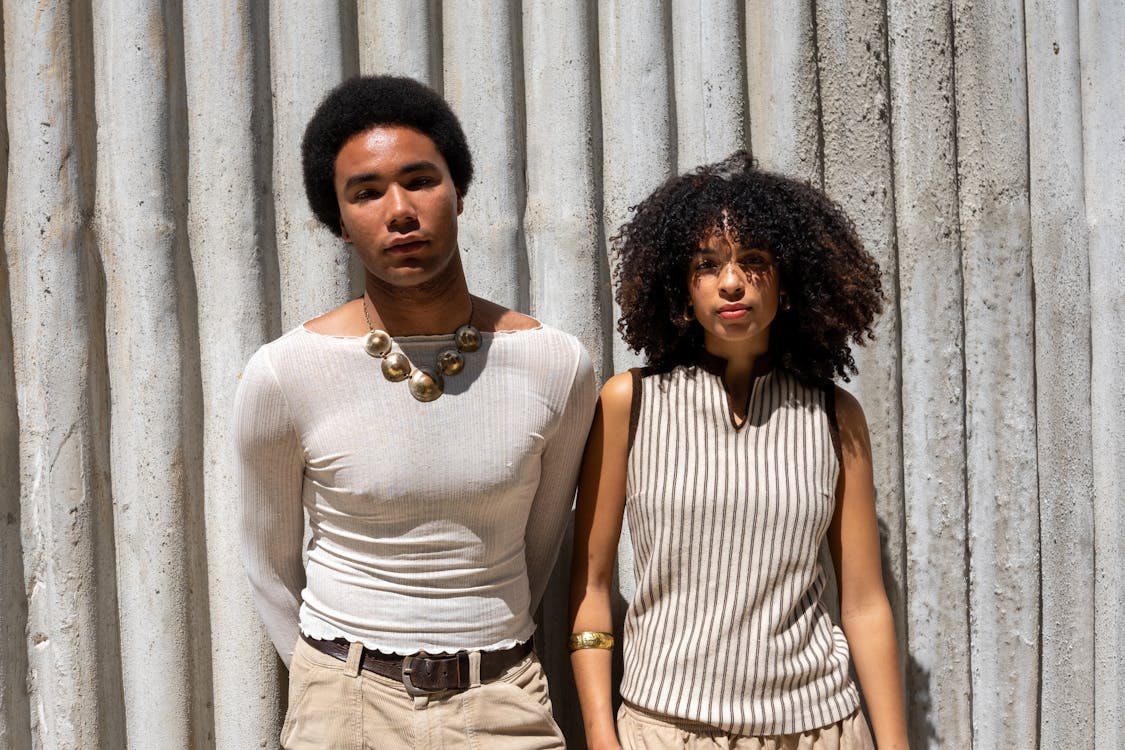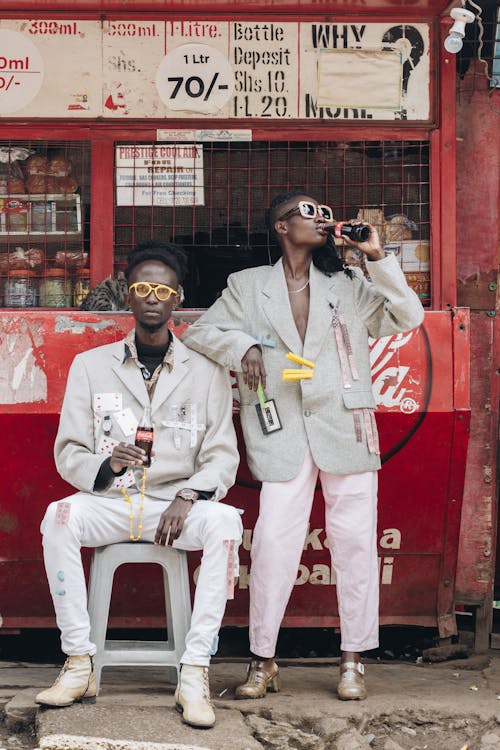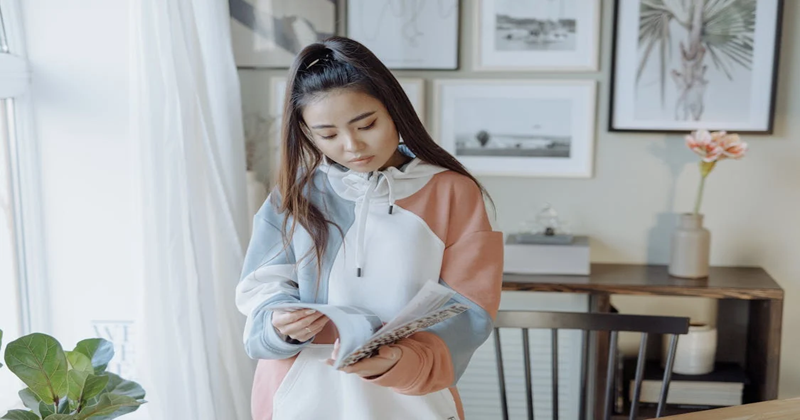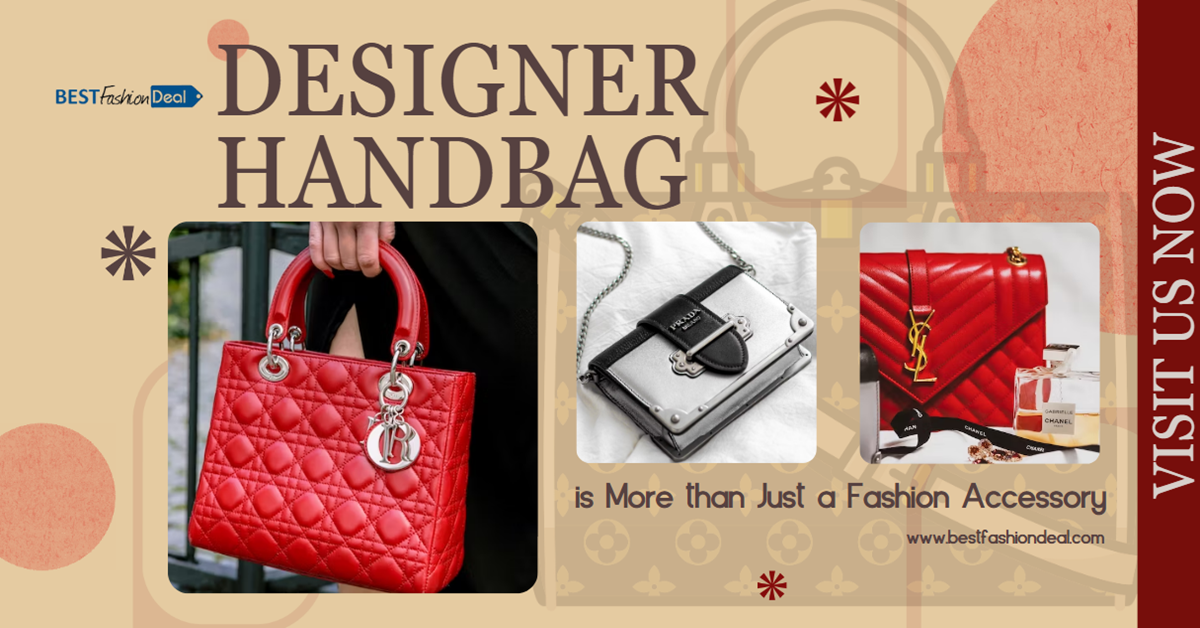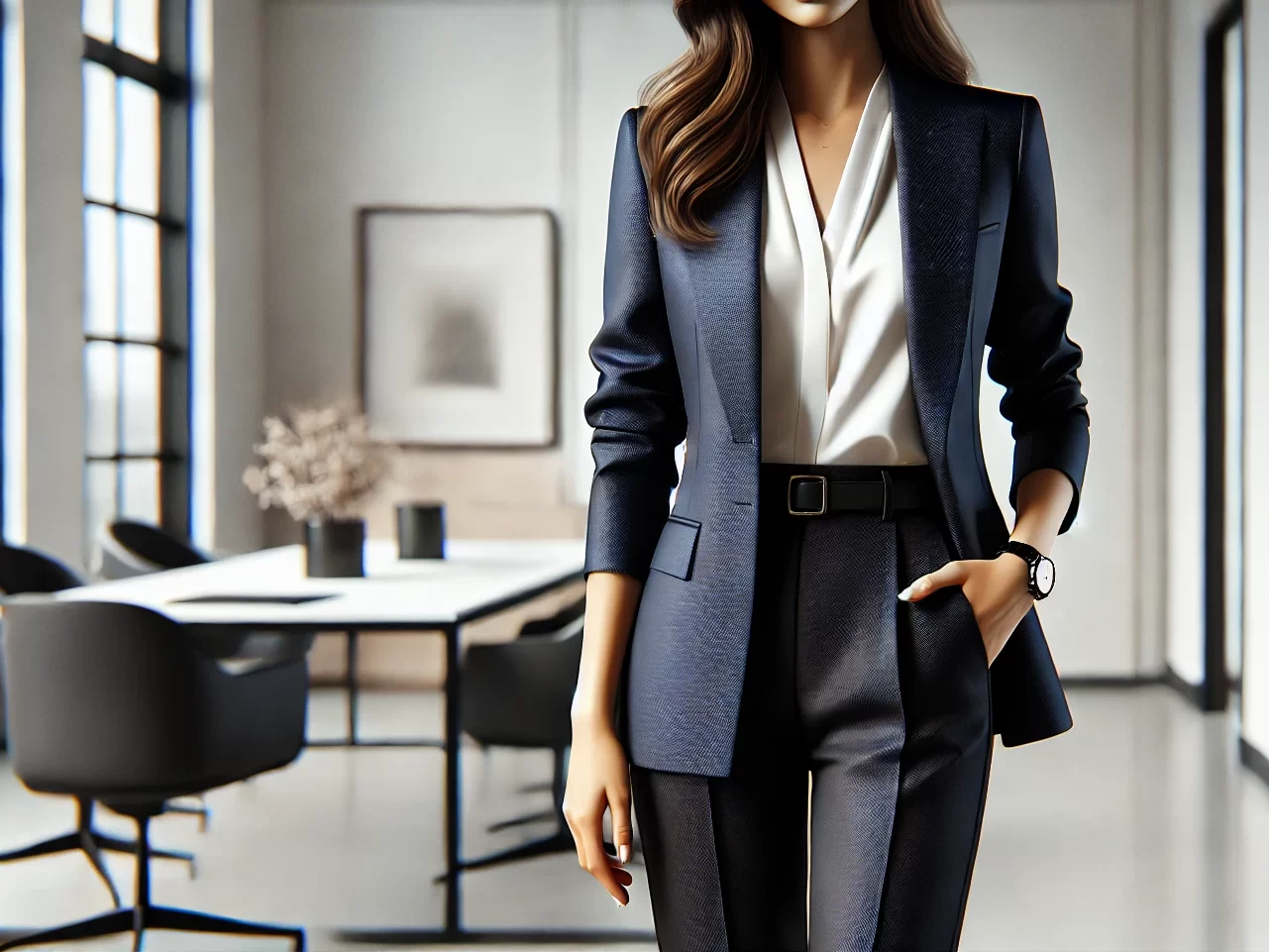In recent years, the fashion industry has witnessed a remarkable transformation characterized by the rise of gender-neutral clothing. This shift signifies more than just a change in clothing styles; it embodies a broader cultural movement that challenges traditional gender norms and promotes inclusivity, diversity, and self-expression. Gender-neutral fashion offers an alternative to the rigid categories of “menswear” and “womenswear,” encouraging individuals to choose clothing based on personal style rather than societal expectations. This article delves into the evolution of gender-neutral fashion, its cultural and societal impact, and the challenges that arise within this transformative movement.
The Evolution of Gender-Neutral Fashion
Gender-neutral fashion is not entirely new; however, its mainstream acceptance significantly departs from the traditional fashion paradigm. Historically, clothing has been deeply intertwined with gender roles, with men and women expected to adhere to specific styles and aesthetics. The 20th century saw various movements questioning these boundaries, such as the androgynous looks popularized by figures like David Bowie and the emergence of unisex collections in the 1980s.
Today, the gender-neutral fashion movement is gaining traction as designers, brands, and consumers alike seek to dismantle the binary notions of gender. This evolution is primarily driven by a cultural shift toward understanding and embracing gender fluidity, which recognizes that gender exists on a spectrum rather than as a strict binary. As society becomes more aware of diverse gender identities, the demand for clothing that reflects this inclusivity has grown.

Key Features of Gender-Neutral Fashion
-
Sustainable Practices
Many gender-neutral fashion brands prioritize sustainability using eco-friendly materials and ethical manufacturing processes. This commitment appeals to environmentally conscious consumers and aligns with the inclusivity and social responsibility values underpinning the gender-neutral movement. Brands often employ recycled fabrics, organic materials, and low-impact dyes, reducing their environmental footprint and promoting a more sustainable fashion industry.
-
Versatile Layering Options
Gender-neutral fashion often emphasizes layering as a critical styling technique. Layering allows individuals to create unique outfits that reflect their style while providing functionality for varying weather conditions. Versatile layering pieces, such as oversized cardigans, long vests, and lightweight jackets, can easily transition from one season to another and are suitable for various occasions.
-
Innovative Textiles
Using innovative textiles in gender-neutral fashion helps blur the lines between traditional categories. Stretchable, breathable, or moisture-wicking fabrics cater to diverse body types and lifestyles, enhancing comfort and wearability. These textiles often allow for designs that conform to the wearer’s shape, creating a flattering fit for individuals of all genders.
-
Minimalist Aesthetics
Many gender-neutral collections embrace minimalist aesthetics, characterized by clean lines and simple designs. This approach appeals to a broad audience by focusing on timeless silhouettes that can be easily styled and accessorized. Minimalist gender-neutral fashion encourages individuals to invest in versatile wardrobe staples that can be mixed and matched for various looks, promoting a sense of sustainability through reduced consumption.
-
Playful Patterns and Prints
Gender-neutral fashion increasingly incorporates playful patterns and prints that challenge traditional gender norms. From bold graphics to abstract designs, these prints encourage self-expression and creativity. By moving away from stereotypical floral or plaid designs often associated with femininity or masculinity, gender-neutral collections allow individuals to explore their style without limitations.
-
Collaborative Designs
The gender-neutral fashion movement often thrives on collaboration, with designers, artists, and influencers coming together to create unique collections. These collaborations can bring fresh perspectives and innovative ideas to the forefront, fostering creativity within the fashion industry. By engaging diverse voices in the design process, gender-neutral brands can develop products that resonate with a wide range of consumers and promote inclusivity.
Cultural and Societal Impact of Gender-Neutral Fashion
The rise of gender-neutral fashion is not merely a trend; it reflects significant societal changes in our understanding of gender identity and expression. Here are some key impacts:
-
Promoting Inclusivity and Diversity
The emergence of gender-neutral fashion has fostered an environment of inclusivity, allowing individuals of all gender identities to feel seen and represented. This movement encourages brands to rethink their marketing strategies and product offerings, ensuring they cater to a broader audience. As a result, consumers are presented with a wider array of choices that celebrate diversity and challenge conventional norms.
-
Challenging Stereotypes
Gender-neutral fashion plays a crucial role in challenging long-standing stereotypes about masculinity and femininity. By promoting clothing that transcends traditional gender boundaries, this movement helps to break down harmful notions that dictate how individuals should dress based on their gender. This shift fosters a culture of acceptance, where individuals can express themselves authentically without fear of judgment.
-
Influencing Consumer Behavior
The growing popularity of gender-neutral fashion is influencing consumer behavior. As people become more aware of the importance of inclusivity, they are increasingly seeking out brands that align with their values. This shift in consumer preferences has significant economic implications, as companies that embrace gender-neutral designs are likely to experience positive outcomes in the market. The projected growth of the global gender-neutral fashion market highlights the demand for inclusive clothing options, with an estimated compound annual growth rate (CAGR) of 6.5% between 2021 and 2030.
-
Driving Conversations on Gender Identity
Gender-neutral fashion catalyzes essential conversations about gender identity and expression. As individuals engage with clothing that defies traditional gender norms, they are encouraged to reflect on their own identities and the societal constructs surrounding them. This dialogue can lead to greater understanding and acceptance of diverse gender identities, ultimately promoting a more inclusive society.
Challenges in the Gender-Neutral Fashion Movement
While the rise of gender-neutral fashion presents numerous opportunities, it also comes with challenges. Addressing these challenges is crucial for the movement’s long-term success.
-
Balancing Design Concepts
One of the primary challenges facing designers in the gender-neutral space is finding the right balance between acknowledging gender identities and creating inclusive styles. Designers must navigate the complexities of fashion, ensuring that their creations resonate with a diverse audience without reinforcing stereotypes. Striking this balance requires a deep understanding of both fashion and societal expectations.
-
Overcoming Backlash
Despite the growing acceptance of gender-neutral fashion, a segment of society remains resistant to these changes. Some individuals cling to traditional gender norms, and brands must be prepared to face criticism and backlash from those uncomfortable with the shift. Addressing these concerns while remaining committed to inclusivity is a delicate challenge for many brands.
-
Educating Consumers
Educating consumers about gender-neutral fashion is essential for its widespread acceptance. Brands must communicate the benefits of gender-neutral clothing and promote an understanding of diverse gender identities. By fostering open dialogue, brands can help consumers navigate their feelings and encourage acceptance of gender-fluid fashion.
-
Supply Chain Adjustments
Implementing gender-neutral fashion concepts often require significant brand supply chain changes. This may involve revamping manufacturing processes, sourcing materials, and negotiating with suppliers. These logistical complexities can pose challenges, particularly for smaller brands with limited resources.
-

Ensuring Representation and Authenticity
To avoid tokenism, brands must ensure genuine representation in their gender-neutral collections. This means going beyond surface-level marketing tactics and committing to inclusivity at all levels of the business. Brands should prioritize diverse voices in their design and marketing teams to create authentic connections with their audience.
-
Cultural Sensitivity
Cultural appropriation remains a legitimate concern in the fashion industry. Brands must be mindful of the cultural significance of various design elements and only borrow from cultures with proper understanding and respect. Engaging with diverse communities can help brands navigate these complexities and foster more inclusive practices.
-
Navigating Legal and Regulatory Environments
As gender-neutral fashion continues to gain traction, brands may encounter varying legal and regulatory environments regarding gender and labeling. Navigating these complexities requires careful consideration and adaptation to ensure compliance while promoting gender-neutral principles.
-
Employee Sensitization and Training
Creating an inclusive workplace is essential for brands committed to gender-neutral fashion. Companies must invest in employee training and sensitization programs to promote understanding of diverse gender identities. This ensures that all staff, from design teams to customer service representatives, are equipped to support and represent the brand’s commitment to inclusivity.
Top 5 Gender-Neutral Fashion Brands
-
TomboyX
TomboyX is all about sustainable clothing that offers unisex undergarments designed for every shape and size. Their philosophy? Clothes should reflect who you are, not what others expect you to be. They prioritize eco-friendliness by avoiding harmful chemicals and even use a water recycling program in their manufacturing process. Plus, TomboyX values transparency and communication throughout its supply chain, aiming to create positive change in the fashion industry.
-
WILDFANG
WILDFANG began in a Portland apartment, born from the frustration of a group of former corporate workers who wanted clothes that broke the mold. Frustrated with the question, “Why is there no pocket in this?” they set out to design gender-neutral apparel that defies traditional fashion norms. Their mission extends beyond clothing—WILDFANG has pledged 1% of their profits to give back to meaningful causes. And yes, all their stylish unisex blazers come with pockets!
-
Big Bud Press
For vibrant colors and styles that match your personality, look no further than Big Bud Press. Based in LA, this brand offers premium unisex apparel in sizes ranging from XXS to 6XL, all while prioritizing local sourcing and ethical manufacturing. Their genderless designs accommodate all body types, so if you’re unsure about sizing, reach out to them for guidance. Their jumpsuits are particularly beloved by the TGT team!
-
Kirrin Finch
Kirrin Finch is on a mission to “do good in this world.” With a menswear-inspired approach, they collaborate with fair and ethical factories, building solid relationships with the artisans who create their products. Kirrin Finch uses low-impact dyes and all-natural, organic materials to make dapper styles accessible to everyone. Ultimately, we all deserve to feel our best!
-
Origami Customs
Origami Customs specializes in handmade swimwear and lingerie that’s gender-affirming. They offer custom orders and free alterations to ensure the perfect fit. With a solid commitment to ethical manufacturing, they partner with family-owned businesses that focus on sustainable practices, using deadstock, local, and recycled fabrics. Each piece is crafted in-house by a small team and a partner co-op, offering a range of products, including binders, packing bottoms, and gaffs for transmasculine, transfeminine, and transfemme individuals.
Conclusion
The rise of gender-neutral fashion signifies a crucial evolution in the industry, reflecting a cultural shift towards inclusivity and self-expression. This movement challenges traditional gender norms, empowering individuals to embrace their unique styles without binary constraints. As designers and brands navigate the complexities of this landscape, they foster diversity and acceptance despite the remaining challenges. The ongoing dialogue surrounding gender identity in fashion presents a promising future, where clothing is a powerful medium for personal expression and societal change, ultimately reshaping the industry into a more inclusive space for all.

